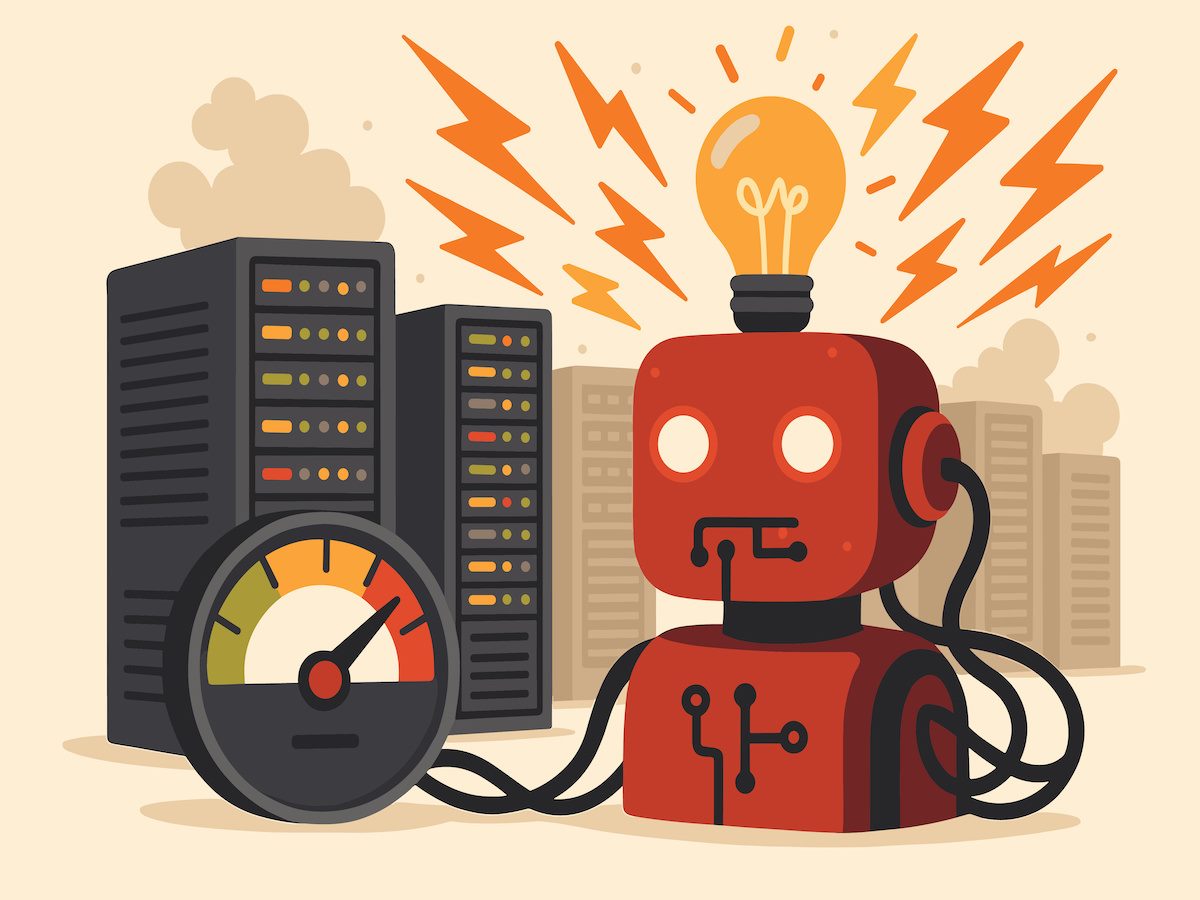Takeaways
- AI's Dirty Secret. Your AI lives in one of 4,000+ power-hungry, water-guzzling warehouses, and the hidden costs are coming for your business.
- Data Center Alley Is a Dead End. Concentrating your AI infrastructure in hotspots like Virginia (638 data centers) or Arizona (162) is a massive, single point of failure for energy, water and community backlash.
- Your AI Is Burning Coal. The voracious power demands of AI are forcing states to abandon green energy promises, tying your "clean" digital strategy to fossil fuels.
- Stop Outsourcing Your Risk. Demand transparency from your cloud providers on the energy, water and community impact of the data centers running your AI. Their liability is your liability.
- The Real AI Race Is for Sustainability. The most resilient enterprises will be those that diversify their AI footprint and lead the charge for a sustainable AI ecosystem.
That brilliant AI your enterprise is betting its future on? It doesn't live in "the cloud." It lives in a massive, power-hungry, water-guzzling warehouse, likely hidden behind a shell LLC, and it's being built in the backyards of angry citizens.
We are in the midst of an invisible, explosive boom in data center construction to fuel the AI revolution. But this boom is built on a fragile foundation of strained power grids, drought-stricken water supplies and a lack of transparency. This isn't just an environmental issue; it is an unpriced risk to your entire digital strategy.
The Bill is Coming Due: The Unpriced Costs of AI's Physical Empire
For years, we've been sold a clean, ethereal vision of the digital future. We talk about "the cloud" as if our data and algorithms reside in some weightless, metaphysical realm. This is a fantasy. The reality is that the AI revolution is built on a foundation of brute physical force: colossal warehouses, sprawling across the American landscape, consuming power and water on the scale of entire cities.
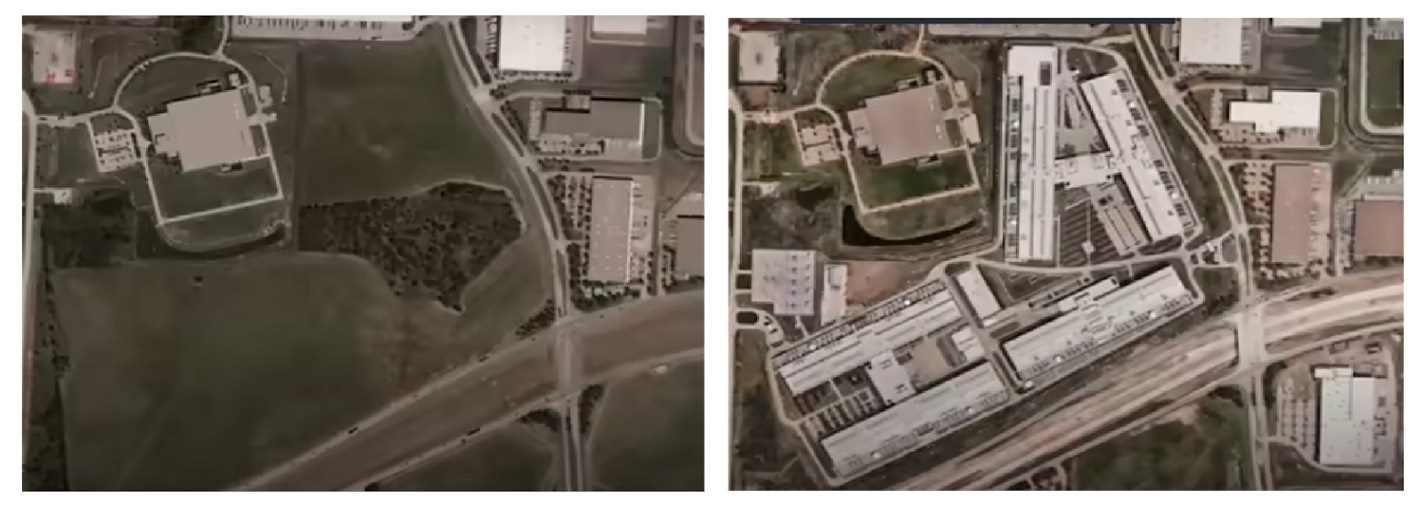
As leaders, we celebrate the magic of the algorithm, but we have remained ignorant of the machine's voracious appetite. This ignorance is no longer a sustainable strategy. The hidden costs and simmering social backlash tied to AI's physical footprint represent one of the most significant and under-appreciated business continuity risks of our time.
Related Article: Green AI Is a Competitive Advantage — Here’s Why It Matters
The Invisible Invasion: A Secretive, Unmapped Boom
The truth is that we are in the midst of a massive, yet unmapped, data center construction boom. While official directories are nonexistent, painstaking investigations piecing together public records like air quality permits for backup diesel generators reveal a staggering reality. As of late 2024, our research has tallied over 4,000 major data centers across the United States, a number that is exploding with more than two new facilities popping up every week.
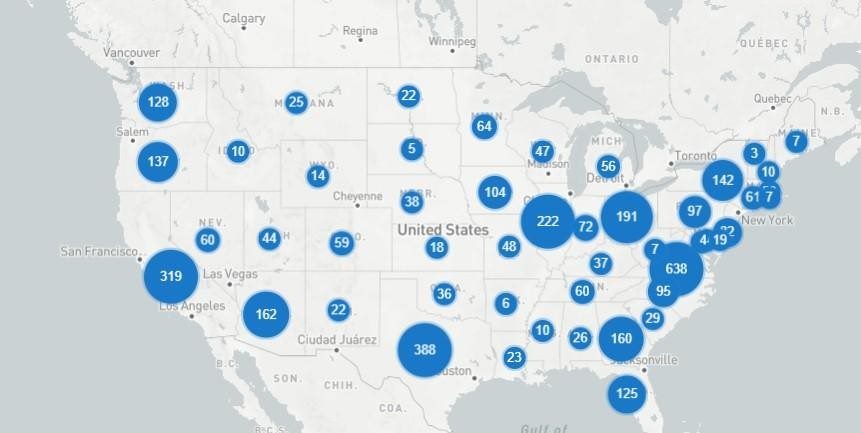
US Data Center Distribution as of Late 2024
| State | Data Centers |
|---|---|
| Virginia | 638 |
| Texas | 388 |
| California | 319 |
| Illinois | 222 |
| Ohio | 191 |
| Arizona | 162 |
| Georgia | 160 |
| New York | 142 |
| Oregon | 137 |
| Washington | 128 |
| Florida | 125 |
| Iowa | 104 |
| Pennsylvania | 97 |
| North Carolina | 95 |
| New Jersey | 82 |
| Indiana | 72 |
| Minnesota | 64 |
| Connecticut | 61 |
| Nevada | 60 |
| Tennessee | 60 |
| Colorado | 59 |
| Michigan | 56 |
| Massachusetts | 50 |
| Missouri | 48 |
| Wisconsin | 47 |
| Maryland | 44 |
| Utah | 44 |
| Nebraska | 38 |
| Kentucky | 37 |
| Oklahoma | 36 |
| South Carolina | 29 |
| Alabama | 26 |
| Montana | 25 |
| Louisiana | 23 |
| New Mexico | 22 |
| North Dakota | 22 |
| Delaware | 19 |
| Kansas | 18 |
| Wyoming | 14 |
| Idaho | 10 |
| Mississippi | 10 |
| New Hampshire | 10 |
| Hawaii | 9 |
| District of Columbia | 7 |
| Maine | 7 |
| Rhode Island | 7 |
| West Virginia | 7 |
| Arkansas | 6 |
| South Dakota | 5 |
| Alaska | 4 |
| Vermont | 3 |
| Total | 4,050 |
This construction is happening under a deliberate strategy of obfuscation. Tech giants like Google, Amazon, Microsoft and Meta operate through a web of anonymous LLCs (like "Mellin Enterprises LLC" for a Google facility in Ohio) to launder their physical footprint, using non-disclosure agreements with local authorities to shroud their activities in secrecy. This isn't just corporate privacy; it's a calculated effort to hide the scale of the resources being consumed from public and investor scrutiny.
The Collision Course: Data Center Alley vs. Main Street, USA
This invisible invasion is now colliding violently with the real world. The densest concentration of data centers on Earth isn't in some remote wasteland; it's in Virginia, the undisputed, throbbing heart of the data-industrial complex, with a staggering 638 facilities. In Loudoun County's "Data Center Alley," as much as a third of the planet's internet traffic flows.
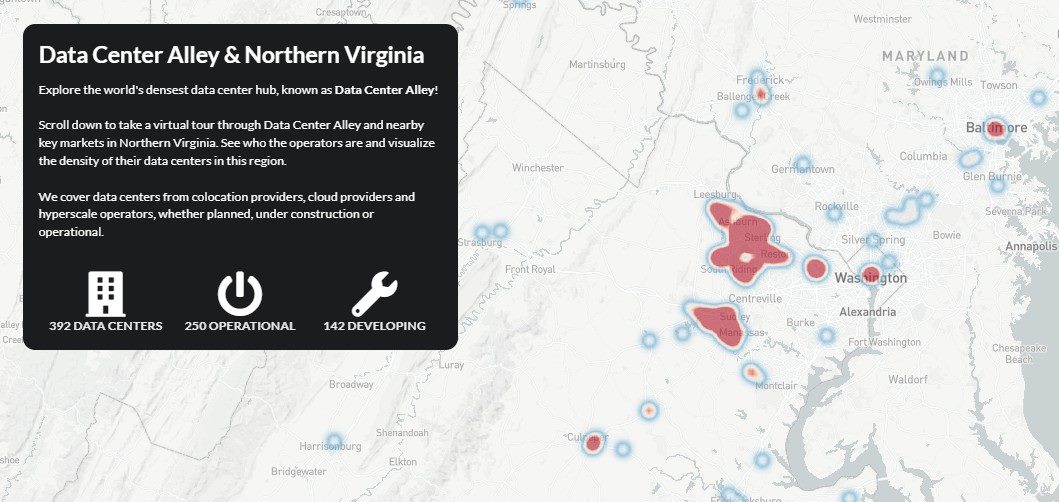
But this is not just a Virginia story. The boom is creating massive, concentrated hubs across the nation. Texas (388 data centers) and California (319) form the next tier of giants, followed by a wave of rapidly growing clusters in states like Illinois (222), Ohio (191) and the drought-stricken landscape of Arizona (162). In these hotspots, massive, 75-foot-tall industrial fortresses are rising dead smack in the middle of a neighborhood.
The consequences for local communities are severe and immediate, a forerunner of a coming rebellion. Residents in Northern Virginia report a constant, low-frequency hum from cooling systems that triggers anxiety, disrupts sleep and creates physical vibrations within their homes. One American Public Health Association (APHA) report links chronic noise exposure to serious health problems. The result is a growing, organized community backlash that is already leading to lawsuits and challenging the rezoning of land. As a leader, are you prepared for your brand to become the villain in these local battles?
The Unpriced Bill: AI's Staggering Thirst for Power and Water
The social cost is just the beginning. The environmental and infrastructural costs are staggering and represent a threat to the long-term viability of your AI strategy.
- The Power Crisis: The largest data centers can consume as much electricity as 200,000 homes. The collective load of 638 data centers in Virginia consumed nearly a quarter of the state's entire electricity supply in 2024. To meet this insatiable demand, some states are being forced to reverse their green energy promises, postponing the closure of coal-fired power plants and building new natural gas facilities.
Your "clean" digital strategy is being powered by dirty coal. The US Department of Energy's latest congressional mandate report estimates that data centers, driven by the AI boom, could soon require 12% of total US electricity. This is already leading to massive, multi-billion-dollar grid upgrades, with costs being passed directly on to residential customers.
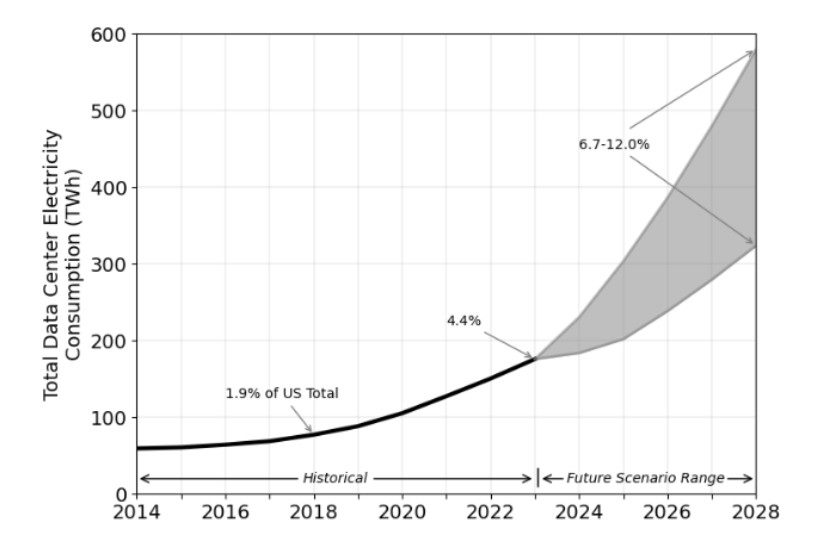
- The Water Crisis: AI is incredibly thirsty. Cooling these server farms requires billions of gallons of water, often drinking water. This becomes a critical business risk when you realize that states with massive data center footprints, like Arizona (162 facilities), Texas (388) and California (319), are among the most water-stressed regions in the country. A single Microsoft campus in Arizona was planned to use 1.83 billion gallons a year, enough for a 150,000-populated city. While companies like Microsoft, Google and Meta tout "water positive" pledges through elaborate offsetting schemes and clever accounting tricks, the reality on the ground is a direct raid on a scarce resource, pitting your enterprise against farmers and local communities.
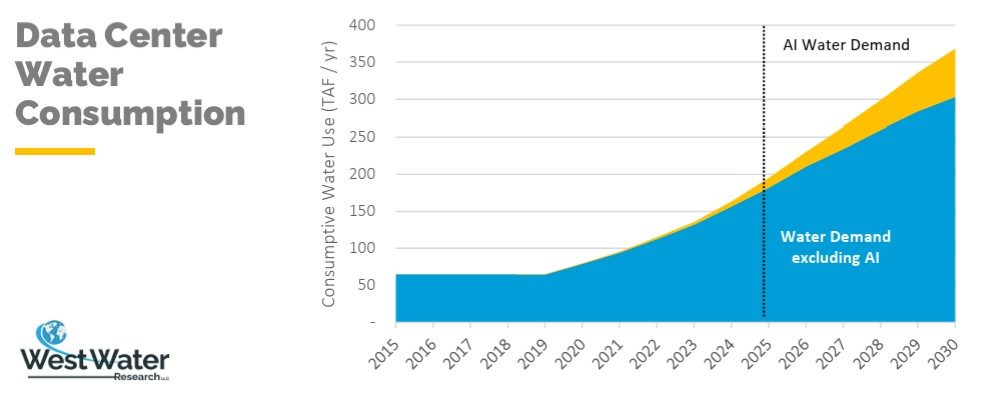
Related Article: Why AI Data Centers Are Turning to Nuclear Power
The Leadership Mandate: Confronting the Physical Reality of Your Digital Ambitions
As an enterprise leader, you can no longer afford to treat "the cloud" as an abstract utility. The physical infrastructure that powers your AI is a critical and volatile part of your supply chain. It's time to act.
Demand Radical Transparency: Your conversations with cloud providers must change. This is no longer a vendor negotiation; it is a supply chain interrogation. Where is our data being processed? What is the energy and water footprint? What is the state of the local grid? What is your relationship with the community? Make these factors a core part of your procurement and risk assessment.
Stop Ignoring the Externalities: The current cost of your AI services does not reflect the massive grid upgrades, water depletion and social friction. Your strategic planning must account for the high probability of rising energy costs, potential service disruptions and brand damage due to these infrastructural strains.
Diversify Your Footprint: Over-concentration in hotspots like Virginia is a dangerous monoculture, exposing your operations to regional energy, water and political risks. Explore partnerships with providers in emerging, less-saturated states like Wyoming (14 facilities) or Montana (25), where renewable energy and cooler climates can offer a more resilient foundation.
Lead the Charge for Sustainable AI: The long-term viability of this revolution depends on leaders like you demanding a more sustainable path. Champion and invest in energy-efficient AI models and hardware. Advocate for industry-wide standards for transparency. Your voice matters in shifting the market.
Final Thought
We are building our digital cathedrals on a physical foundation of cracking power grids, drying wells and simmering public rage. The AI revolution, for all its brilliance, is tethered to the finite resources of our planet and the goodwill of the communities it impacts.
To ignore these hidden costs, the humming walls, the strained grids, the drying wells, is not just a failure of social responsibility; it is a failure of business strategy. True leadership in the AI era requires looking beyond the algorithm and confronting the hard, physical realities of the machine.
FAQs
Key innovations include:
- Liquid cooling (which is more efficient than air cooling)
- Using waste heat to warm nearby buildings
- Developing more energy-efficient chips
- Co-locating data centers with renewable energy sources like wind or solar farms
- Partnerships with nuclear power companies to revive old reactors
It's becoming a significant factor. Deals like Microsoft's plan to power data centers from the reopened Three Mile Island nuclear plant signal a trend where tech companies are turning to nuclear for the reliable, carbon-free, baseload power that AI's 24/7 demands require.
Other nuclear data center deals include:
- Google's agreement with Kairos Power to develop small modular reactors
- Amazon $500 million+ investment in three nuclear projects
Learn how you can join our contributor community.
